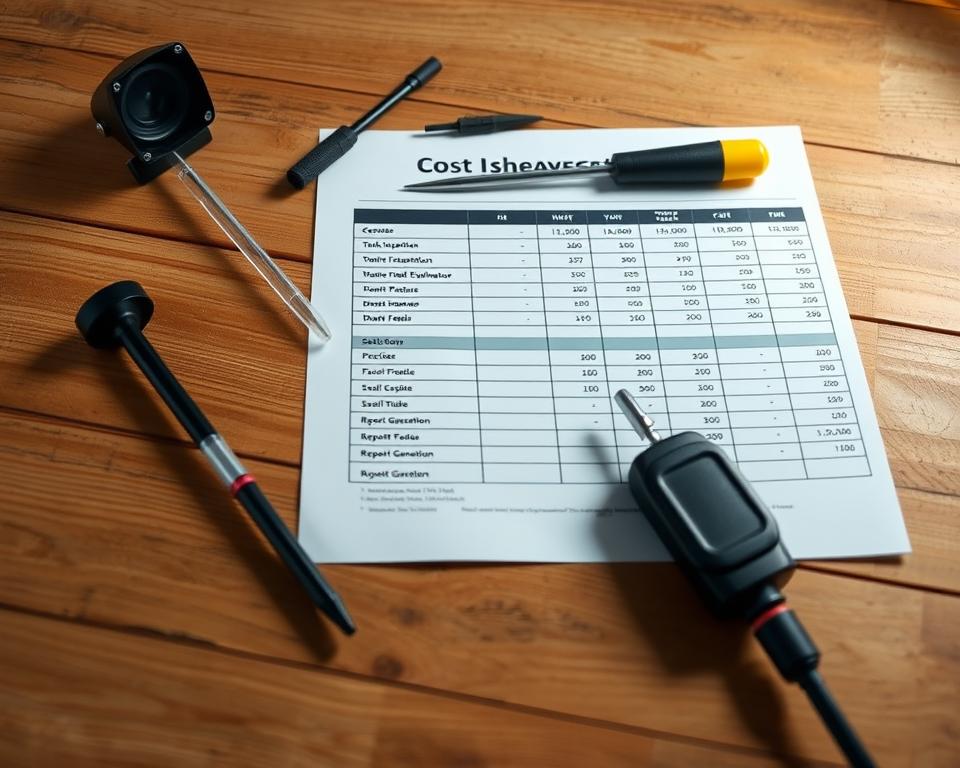Sewage System Empty Price: Current Charges & Elements
Did you know that about 25% of U.S. households use onsite sewage systems for sewage treatment, especially in non-urban areas? This fact illustrates how essential it is to understand the price of sewage tank cleaning. The cost can change a lot, based on several significant determinants that homeowners should be aware of. Staying on top of with maintenance, like pumping, is key to preventing expensive repairs later and keeping your system running well.
In this write-up, we’ll explore what affects the price of sewage tank cleaning. We aim to help you prepare for this important part of having a residence.
Comprehending Sewage Tanks
A onsite sewage system is essential for households without municipal sewage, especially in rural areas. Comprehending how it works helps residents manage it.
What is a Septic System?
A septic system is a special arrangement underground. It has a sewage tank, a divider, and a leach field. Effluent goes into the tank to dissolve and divide. It’s important for homeowners to understand how it works for hygiene.
How Does a Sewage Tank Work?
First, effluent goes into the septic tank. There, particulates settle to the bottom as residue, while oils and grease ascend to the top. The fluid waste then moves to the absorption field, where soil purifies out harmful stuff. This keeps the environment clean and aquifers clean.
Importance of Frequent Servicing
Keeping a sewage tank clean is essential to prevent problems. Specialists say to empty it every 2-3 years using septic system pumping near me, based on how much it’s operated and the size of the house. Regular care avoids obstructions and overflow, allowing the system persist longer. Comprehending about septic systems aids in managing it, ensuring individuals and the environment safe.
Factors Affecting Septic Tank Emptying Price
Understanding what affects septic tank emptying price is essential for homeowners. It aids with budgeting for servicing and ensuring sewage tanks functioning well. Significant determinants include the volume of the holding tank, how regularly it demands cleaning, and where you live.
Volume of Sewage Tank
The capacity of the sewage tank is a major factor in pump costs. Bigger tanks need more effort and work to empty, making them more expensive. Property owners should choose the right capacity according to their family size to control charges over time.
Cleaning Regularity
How frequently you pump your sewage tank also affects expenses. Cleaning regularly aids avoid overflows and costly repairs. It’s wise to adhere to a emptying plan that suits your tank size and home use to ensure your system functioning effectively.
Area and Price Discrepancies
Geographic area can alter how much you pay for septic tank emptying. Prices might be higher in urban areas because of increased cost of living, and lower in non-urban regions. Residents should investigate regional costs to ensure they plan right for onsite sewage system services.
| Determinant | Description | Impact on Cost |
|---|---|---|
| Sewage Tank Volume | Tank’s capacity influences the waste volume that can be contained. | Larger tanks lead to higher pumping fees. |
| Pumping Interval | How often the sewage tank is cleaned. | More frequent pumping can prevent larger future expenses. |
| Region | The location where the service is provided. | Costs may fluctuate significantly between urban and non-urban areas. |
Common Prices for Septic Pump Services
Residents with sewage tanks require the common prices for sewage tank cleaning. Prices can fluctuate a lot depending on different factors. Comprehending this can assist with financial preparation and cost management.
Usual Span for Septic Pumping
The expense to empty a septic system usually is between $300 to $700. This is based on the capacity of the sewage tank and where it is located. On normal, it is charged about $0.30 to $0.70 per gallon. Bigger tanks mean increased charges because there’s more waste.
Additional Costs for Associated Services
When you book septic tank emptying, be prepared for supplementary charges. Cleaning the septic tank can be charged from $200 to $300. This is influenced by what’s needed, like hydro jetting. Cleaning filters and inspections later on might also be charged more. These upkeep assist maintain your system working well over time.
Budgeting for Sewage Pump Replacement Costs
It’s key for residents to allocate funds for septic pump replacement and repairs. Understanding the costs for regional maintenance assists you prepare and avoid surprise bills. This way, you can budget better for maintenance and maintain your septic system running smoothly.
Approximate Charges for Regional Maintenance
Septic tank repair costs fluctuate a lot. They can be anywhere from $600 to $3,000, influenced by the damage and required maintenance. Here are some usual charges:
- Cost to replace septic pump: $1,000 – $2,500
- Tank repairs or replacements: $1,500 – $3,000
- Expense for pipe maintenance: $300 – $1,000
Budgeting for Ongoing Maintenance & Repairs
When allocating funds for a septic system pump, think about annual maintenance costs too. These usually range from $150 to $1,000. Routine examinations and minor fixes prevent big problems later on, saving you money.
Setting a budget each year aids handle large-scale fixes. This safeguards your property in your home. Planning for both expected and surprise repairs ensures your sewage tank operating efficiently and endures longer.
Cost of Setting Up and Maintaining a Septic System
Installing a sewage tank is priced at between $500 and $1,300. This is based on the capacity and how challenging it is to fit. This expense is key to having a dependable waste management system. But, the price doesn’t stop after you fit it; you also need to upkeep it.
How much you expend on septic pump maintenance fluctuates based on how regularly you inspect it and the type of care it needs. Frequent inspections and servicing can reduce the probability of costly repairs later. Setting aside money for maintenance aids your system persist longer and operate more effectively, lowering costs in the long run.
It’s vital to plan for both the primary and ongoing charges of a sewage tank. Understanding what you’ll expend on installation and servicing helps you make smart choices. This way, you shield your property and maintain your sewage tank running well for years.



